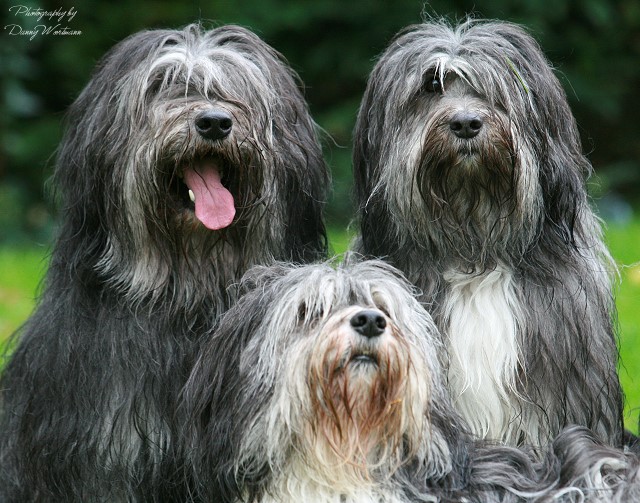Your PON can be trusted to have self restraint when you are out of
the room. If she interacts with the table when you are
out of the room and then quickly dashes away from it
when she hears you approach, you are encouraging bad
behavior. You are not encouraging her to leave the
coffee table alone. Management options include baby
gates, crates or putting her on leash or bringing her
with you when you leave the room. These are some tips:
* Be sure you have identified a special area
for your PON
* Be sure you have a solid "leave it". If you
think your PON is moving towards the off-limits area,
you can use "leave it" as a warning and a
"timeout" if she crosses the line.
Once you have established basics, keep in mind
that if your PON gets something that is off-limits just
one time, you will need a lot of re-training. Remember
you will get to the final goal much faster if you avoid
making a mistake and put your PON in a situation that is
too advanced. If you are not sure of your PON's skill
level, use a long leash as a safety precaution. Keep
food far away from the counter edge, and only leave your
PON for very short periods of time.
Have your PON on a loose leash so you can gently grab
her and redirect her, if necessary or use a timeout as
needed. You should now focus on duration of time that
your PON can leave a location alone and the distance
that you are away from the your dog.
* Start by keeping the food far
away from the edge of the table to make it more
difficult and less enticing for your PON. Give your PON
a lot of encouragement for leaving it alone.
Occasionally give treats for not interacting with the
table. Make sure you reward for behavior that is
appropriate such as looking at you, sitting next to the
table, lying down, etc.
* Use a timeout for each infraction. Say,
"timeout" and gently put your dog in another room or a
crate for 5-30 seconds. Only take your PON out of the
timeout if she is calm.Once your PON can easily leave
the food item alone for 5 minutes with you right next to
her, you can now add some distance.
- Assuming you are sitting on the couch next to
your PON and the coffee table, stand up and take one
step away.
- Say, "yes" and give your PON a treat.
- Start again from the couch each time and add
more steps.
Continuing with this session:
- Stand up and take two steps away. During the
first step, give verbal praise. After the second
step, give your approval (yes) and treat.
- Continue this process until you are almost out
of the room. It is important to stay at one distance
for a period of time and occasionally give verbal
praise while working on duration and distance. You
don't want your PON to just leave food alone for 5
seconds, you want her to be able to leave it alone
for extended periods of time.
- When working on distance, you can occasionally
come back, give a treat and move away again. This is
one more way to reward a specific behavior.
- If your PON ever starts to move towards the
location, say, "Leave It". "Good girl" if she leaves
it, "Timeout" if she continues and makes a wrong
decision.
Problems:
- If your PON immediately makes a mistake when you
add distance, start at a shorter distance and
practice until she can leave the object alone for at
least 5 minutes. If you can't add distance at all,
work at adding more duration while you are right
next to your PON.
2. Don't forget about using a leash, if
necessary, to ensure that your PON doesn't quickly grab
an object.
Out of the room:
Don't advance on to this step until you have a lot of
duration at each distance while you are still in the
room. Don't forget it is really important that
your PON never gets an item that you don't want her to
get hold of during these sessions.
- Leave for one second, come back and offer a
treat.
- Leave for two seconds, come back and offer a
treat.
- If you need a bit more control, use a long leash
while you are leaving the room. The leash should be
kept loose, but you should be prepared to tighten it
gently and move your PON away from the location, if
necessary.
- Stand out of the room and "peek" around the
corner occasionally as you increase time. This is
not a true measure of your PON's ability, because
she is most likely aware you are there. However, she
is still controlling her natural instinct to grab
the food. This is the long-term lesson you are
teaching.
- Next you can leave and come back multiple times,
providing verbal praise for many of the returns and
reward with treats occasionally.
Avoid advancing too quickly. This exercise could take
a long time depending on how often you practice and how
consistent you are. "Leave it" is an important
communication tool. It is a warning that your PON is
about to make a mistake. Practice "leave it" a lot with
a variety of objects and locations. After a few
sessions, use timeouts immediately for each infraction
Make sure you are using a lot of verbal praise and
treats for the correct decisions your PON makes during
your sessions.

